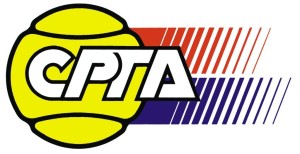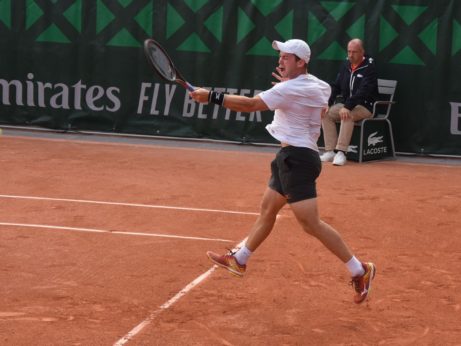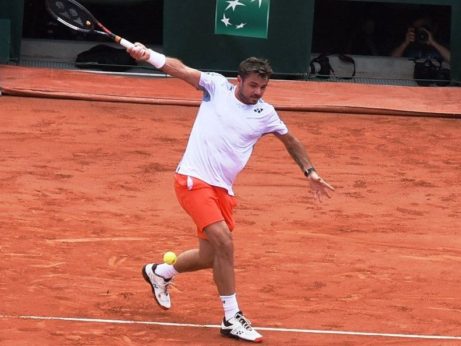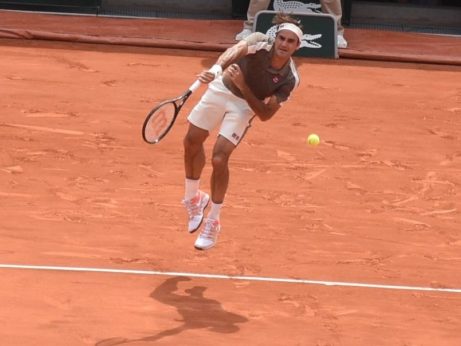Taylor Fritz – Troubled two-handed backhand 2.0
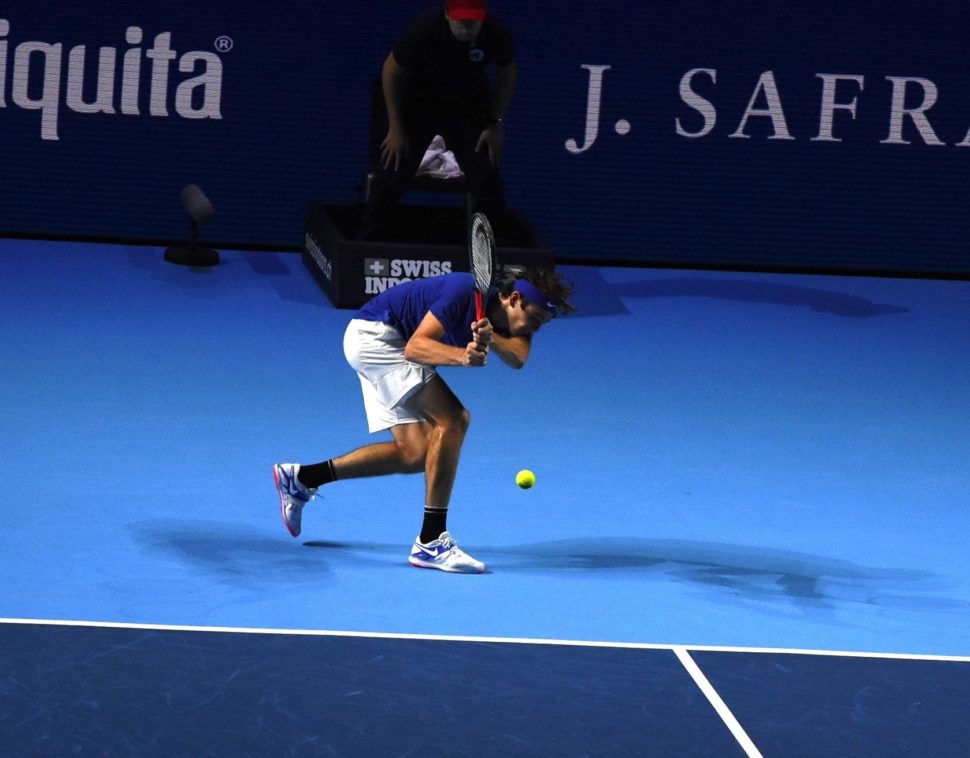
Probably the biggest prodigy of the American men’s tennis, California’s own Taylor Fritz (*1997 / USA), has been “born with a silver spoon” into a very prominent tennis family. His mother Kathy May-Fritz is a former top 10 WTA player from a well-established business family and his father Guy Fritz is also a former pro tennis player and a coach.
Physically very strong and tall (193 cm = 6’4”) Taylor (hopefully, in his case, just by the effect of the inherited genes) was the runner-up of the 2015 Junior French Open and won the 2015 Junior US Open (playing the fellow American Tommy Paul (*97) in both finals). These results have helped him to reach the crown for the 2015 ITF Junior Boy’s World Champion (as the first American since Donald Young reaching this title in 2005).
Taylor’s game is based on a very powerful and technically quite clean (mainly 1st) service. His groundstrokes are also quite powerful but tend to be mostly a bit less controlled and also less efficient than the groundstrokes of the very best world-class players. In a general sense, Taylor’s forehands and backhands have too much of an arm/forearm action while not always putting the main focus on the spacing making possible the optimal “body energy unloading the Tennis 3.0-way”. This situation then often leads to a higher amount of errors, mainly under the severe pressure of the very best opponents.
On the backhand side, Taylor, while surely calculating also with the power potential of his upper body/arms, is often blocking (parts of) the body energy (mainly from the lower body) out of the action as can be seen at the photos below. His stance is also often quite closed/locked or direct & static. This may lead to the conclusion, that Taylor is often deliberately using the older (Tennis 2.0-like) technique of the “stopped 3rd link” where stopping of the previous segments (in this case hip & shoulder) as an action, leads to the acceleration of the following link (arms) as a reaction. This technique has its weaknesses mainly while the player is receiving heavy balls from the best opponent as it is not most suitable for the seamless transfer between the incoming energy absorption and own energy release. Players using such a technique have then quite frequent problems with the optimal combination of the ball receiving & ball sending while competing at the top level of their own abilities. “Blocking the 3rd link” (aka one of the Tennis 2.0 technical approaches) and “Riding the wave of the body energy unloading”(aka Tennis 3.0) are from the mental (inner picture) as well as dynamic and regulatory point of view two different approaches with the differences starting at the muscle fiber level. And needless to say, also the effects on the body and injury probabilities are different.
Below, I am documenting Taylor backhand troubles in his lost 1st round match against significantly smaller (183 cm = 6’0”) Alex de Minaur (*1999 / AUS) during the 2019 Swiss Indoors. Alex, in general, is mostly using a more modern and more efficient technical approach to his two-handed backhand, with a practically seamless receiving/sending combination and body energy dominance of the action (=backhand 3.0), than Taylor. Taylor himself is also capable of hitting a solid backhand 3.0, but the question is how often he uses each of them and what he prefers to do under pressure.



This article covers certain aspects of Taylor Fritz’s two-handed backhand and two-handed backhand in general only! It is not intended as a complete stroke analysis. Further extensive photo galleries and more distinct details about his backhand and other strokes (including improvement suggestions) as well as about the strokes of many other players over the time are available upon a qualified request at drmgb11(at)gmail.com. Some significant details of this kind, necessary for the peak performance in modern tennis as well as for a sustainable tennis training/development in general, are being discussed also in the seminar “TENNIS 3.0 – Future of the Game”, which is available worldwide upon request – www.tennis30.com / www.tennis30.cz
Photos (October 2019) & text (January 2020) copyright by Dr. Martin G. Baroch. Any further publication of either any of the photos and/or texts with the explicit written permission issued by the author/copyright owner only!! All comments & instructions provided reflect just the personal opinion of the author and neither the author nor the CPTA accepts any responsibility for potential damages, direct or implied, of any kind!!
